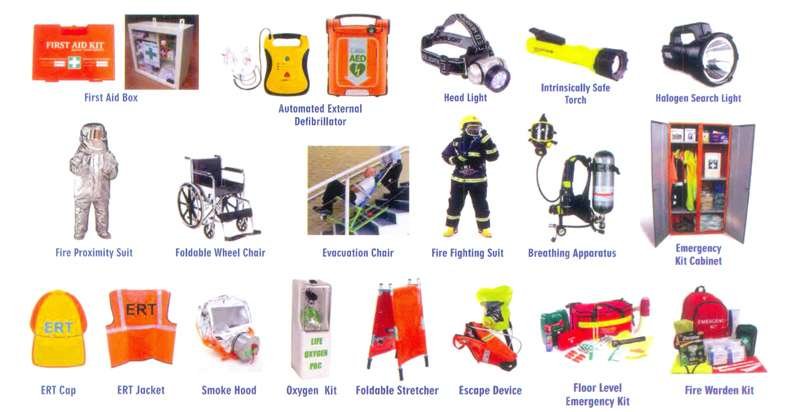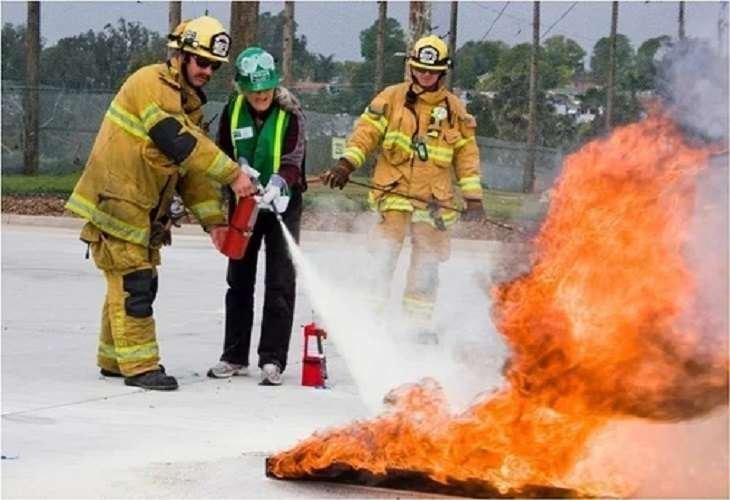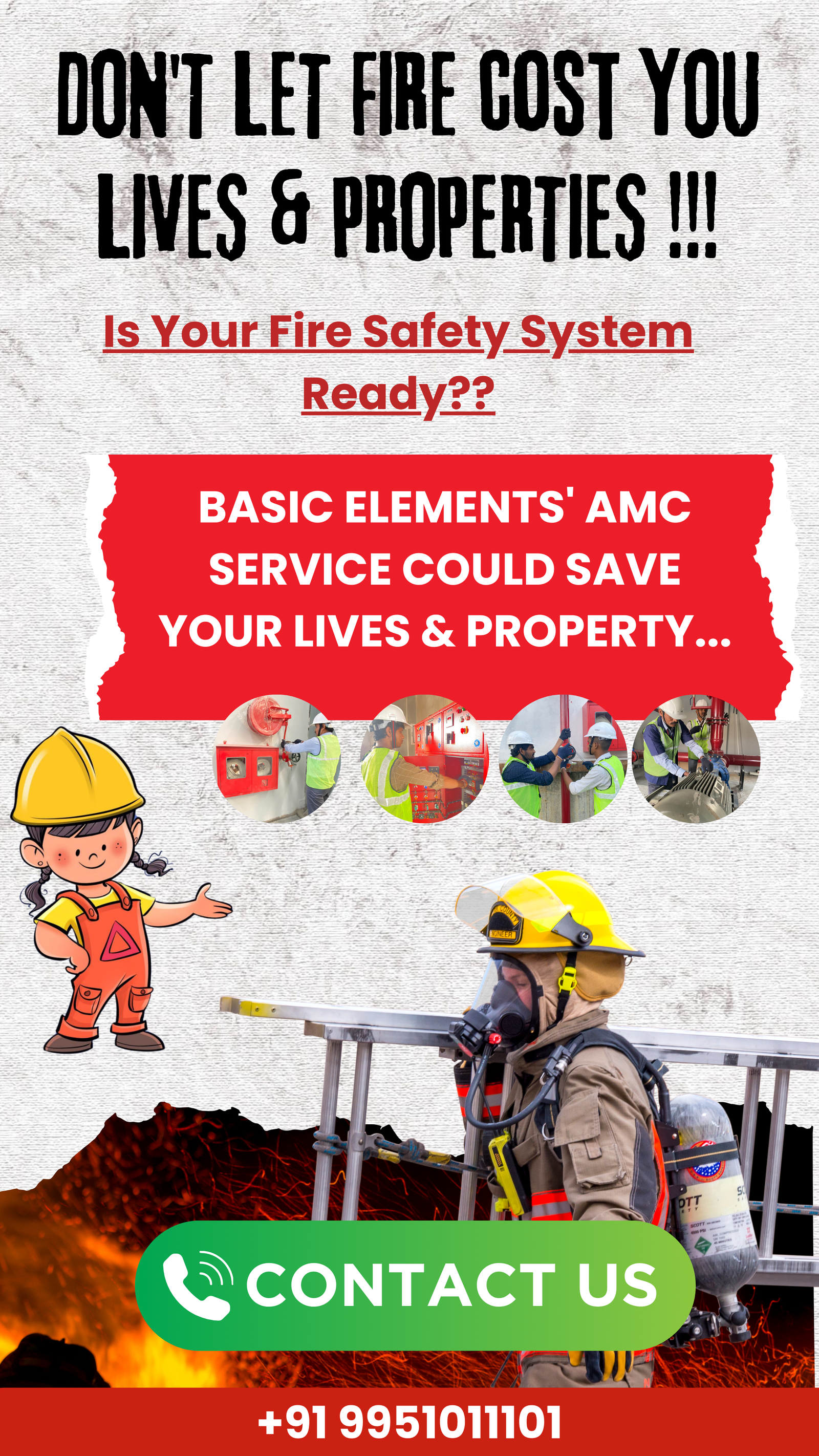Understanding Emergency Evacuation Procedures: What You Need to Know
In today’s world, being prepared for emergencies is crucial for every workplace. Emergency evacuation procedures are a vital component of workplace safety and emergency preparedness. This guide will walk you through the essentials of evacuation procedures and help you understand the basics of creating an effective evacuation plan.
Introduction
Emergency evacuation procedures are a set of pre-planned actions designed to ensure the swift and safe exit of people from a facility during an emergency situation. These procedures are a critical aspect of workplace safety, protecting employees, visitors, and property in the event of fires, natural disasters, or other hazardous situations.
Effective evacuation procedures can mean the difference between life and death. They not only help in saving lives but also minimize panic and confusion during emergencies. As such, understanding and implementing proper evacuation procedures is a responsibility that every workplace must take seriously.

Key Components of Emergency Evacuation Procedures
Alarm Systems and Warning Methods
A reliable alarm system is the first line of defence in an emergency. This system should:
- Be clearly audible throughout the facility
- Use distinct sounds or signals for different types of emergencies
- Include visual alarms (like flashing lights) for areas with high noise levels or for employees with hearing impairments
Evacuation Routes and Exit Strategies
Well-planned evacuation routes are crucial for a quick and orderly exit. Consider the following:
- Clearly mark primary and secondary evacuation routes
- Ensure routes are wide enough to accommodate the number of people in your facility
- Keep routes free from obstructions at all times
- Post evacuation maps at key locations throughout the building
Assembly Points and Headcount Procedures
Designate assembly points where people can gather safely after evacuating. These should be:
- At a safe distance from the building
- Easy to access and able to accommodate all evacuees
- Known to all employees and clearly indicated in the evacuation plan
Implement a reliable headcount system to ensure all individuals are accounted for after evacuation.
Developing an Effective Evacuation Plan
Risk Assessment and Identifying Potential Emergencies
Start by conducting a thorough risk assessment of your workplace. Identify potential emergencies that could require evacuation, such as:
- Fires
- Natural disasters (earthquakes, floods, storms)
- Chemical spills or gas leaks
- Security threats
Creating and Documenting the Evacuation Plan
Based on your risk assessment, create a detailed evacuation plan. This should include:
- Step-by-step procedures for different types of emergencies
- Clear instructions for employees and visitors
- Specific details about evacuation routes, assembly points, and communication methods
Assigning Roles and Responsibilities
Designate and train specific individuals to take on key roles during an evacuation, such as:
- Floor wardens to guide people to exits
- First aid officers
- individuals responsible for assisting those with disabilities
Emergency Preparedness Measures
Employee Training on Evacuation Procedures
Regular training ensures all employees are familiar with evacuation procedures. This should cover:
- Recognition of alarm signals
- Knowledge of evacuation routes and assembly points
- Understanding of individual roles and responsibilities
Regular Evacuation Drills and Exercises
Conduct evacuation drills at least twice a year. These drills help:
- Familiarize employees with procedures
- Identify any weaknesses in the plan
- Build confidence in responding to real emergencies
Maintaining Emergency Equipment
Regularly inspect and maintain all emergency equipment, including:
- Fire extinguishers
- First aid kits
- Emergency lighting
- Communication devices

Evacuation Plan Basics
Clear Communication Protocols
Establish clear methods for communicating during an emergency, including:
- How the evacuation order will be given
- Chain of command for decision-making
- Methods for communicating with emergency services
Procedures for Assisting Individuals with Disabilities
Develop specific plans for assisting individuals with disabilities, which may include:
- Buddy systems
- Use of evacuation chairs or other assistive devices
- Designated waiting areas for those who can’t use stairs
Coordination with Local Emergency Services
Build relationships with local fire departments, police, and other emergency services. Share your evacuation plans with them and seek their input for improvements.
Implementing and Maintaining Your Evacuation Procedures
Regular Review and Updates of the Plan
Review your evacuation plan at least annually and update it whenever there are changes to your workplace layout, staff, or potential risks.
Post-Evacuation Evaluation and Improvement
After each drill or real evacuation, conduct a thorough evaluation. Gather feedback from employees and use this information to refine and improve your procedures.
Ensuring Compliance with Workplace Safety Regulations
Stay informed about local and national safety regulations. Regularly audit your procedures to ensure they meet or exceed these standards.
The Importance of a Fire Evacuation Plan: Protecting Lives and Property
In the realm of workplace safety, few elements are as crucial as a well-designed fire evacuation plan. This essential component of fire safety not only safeguards lives but also helps protect valuable property and assets. Let’s explore why fire evacuation plans are so important and how they contribute to overall fire safety in the workplace.
Understanding Fire Evacuation Plans
A fire evacuation plan is a detailed strategy for safely and efficiently evacuating a building in case of a fire emergency. It’s a crucial part of fire safety guidelines that every workplace should have in place. An effective plan includes:
- Clearly marked evacuation routes
- Designated assembly points outside the building
- Specific roles and responsibilities for staff members
- Procedures for assisting individuals with disabilities
The Critical Role of Fire Safety Guidelines
Fire safety guidelines serve as the foundation for creating and implementing effective fire evacuation plans. These guidelines typically cover:
- Fire prevention measures
- Proper use and maintenance of fire safety equipment
- Training requirements for staff
- Regular fire risk assessments
By following comprehensive fire safety guidelines, workplaces can significantly reduce the risk of fires and ensure better preparedness in case of an emergency.
Implementing Workplace Fire Protocols
Workplace fire protocols are the specific procedures that employees should follow in case of a fire. These protocols are an essential part of any fire evacuation plan and typically include:
- How to raise the alarm when a fire is discovered
- The correct way to use fire extinguishers
- Procedures for shutting down critical equipment safely
- Communication methods during an evacuation
Proper implementation of these protocols can make the difference between a smooth evacuation and a chaotic one, potentially saving lives in the process.
The Importance of Fire Drills
Fire drills are perhaps the most critical component of fire safety preparedness. Regular fire drills offer numerous benefits:
- Familiarize employees with evacuation routes and procedures
- Help identify potential issues in the evacuation plan
- Build confidence in employees’ ability to respond in an actual emergency
- Meet legal requirements for workplace safety
We recommend conducting fire drills at least twice a year. After each drill, it’s crucial to gather feedback and use it to improve your evacuation procedures.
Protecting Lives: The Primary Goal
The most important reason for having a fire evacuation plan is to protect human lives. In the chaos of a fire emergency, a well-practised plan can:
- Reduce panic and confusion
- Ensure swift evacuation
- Provide clear guidance on what to do and where to go
- Help account for all individuals after the evacuation
Remember, in a fire situation, every second counts. A solid evacuation plan can save precious time when it matters most.
Safeguarding Property and Business Continuity
While protecting lives is the primary goal, a good fire evacuation plan also helps minimize property damage and ensures business continuity:
- Trained employees can safely shut down critical systems before evacuating
- Proper protocols can prevent the spread of fire
- Quick and organized evacuation allows firefighters to enter the building sooner
- A well-executed plan can reduce downtime after a fire incident
Legal Compliance and Insurance Considerations
Having a fire evacuation plan isn’t just good practice—it’s often a legal requirement. Many jurisdictions mandate that businesses have fire safety measures in place, including evacuation plans. Additionally, insurance companies often offer better rates to businesses with comprehensive fire safety protocols.
Key Components of Effective Emergency Evacuation Procedures in the Workplace
When an emergency strikes, having a clear evacuation plan can save lives. Here are the key parts of a good workplace evacuation plan:
Evacuation Routes
- Clear paths to exit the building safely
- It should be wide enough for everyone to use
- Must be kept clear of obstacles
- Clearly marked with signs or floor markings
Emergency Exits
- Multiple exits available on each floor
- Clearly marked with illuminated signs
- Easy to open, even in the dark
- Regular checks to ensure they’re not blocked
Assembly Points
- Safe places outside the building where everyone meets
- Far enough from the building to avoid danger
- Large enough to hold all employees
- Clearly communicated to all staff
Communication Plans
- How to alert everyone about an emergency
- This could include alarms, PA systems, or phone alerts
- Clear instructions on what to do and where to go
- A way to account for everyone after evacuation
Employee Roles During Emergencies
- Specific people assigned to help with evacuation
- Floor wardens to guide others to exits
- First aid responders
- Someone to do a final check of the area

Remember:
- Practice your evacuation plan regularly
- Keep it simple so everyone can understand
- Review and update the plan often
By focusing on these key components, you can create an effective emergency evacuation procedure that keeps everyone safe when it matters most.
How to Create a Comprehensive Fire Evacuation Plan for Your Organization
Fire safety is vital for every organization. A good fire evacuation plan can save lives and protect property. This article will guide you through the steps to create a thorough fire evacuation plan for your workplace.
Why You Need an Evacuation Plan
An evacuation plan is a set of instructions that tell people how to leave a building quickly and safely in case of a fire. Having a plan is important because it:
- Helps everyone know what to do in an emergency
- Reduces panic and confusion
- Saves time when every second counts
- Meets legal requirements for workplace safety
Steps to Create a Fire Evacuation Plan
- Conduct a Risk Assessment Before making a plan, you need to understand the risks in your building. Walk through your workplace and look for:
- Possible fire hazards
- Exit routes and emergency exits
- Areas where people might get trapped
- Design Evacuation Routes Based on your risk assessment:
- Mark the quickest and safest ways out of the building
- Make sure routes are wide enough and clear of obstacles
- Plan alternative routes in case some exits are blocked
- Choose Assembly Points Pick safe places outside where everyone can gather after leaving the building. Make sure these spots are:
- Far enough from the building
- Easy to find
- Big enough for all staff and visitors
- Assign Roles and Responsibilities Decide who will do important tasks during an evacuation, such as:
- Fire wardens to guide people out
- Someone to do a final check of the building
The Role of Emergency Fire Lights in Enhancing Safety During Evacuations
Emergency fire lights play a crucial role in keeping people safe during evacuations. These lights help guide people to exits when the main power fails or smoke fills the air. Let’s look at why they’re important and how to use them effectively.
Why Emergency Lighting Matters
Emergency lighting systems are a key part of any fire safety plan because they:
- Light up exit routes when normal lights go out
- Help people find their way through smoke or darkness
- Reduce panic by providing clear direction
- Keep working even if the building loses power

Types of Emergency Fire Lights
There are several types of emergency lights used in buildings:
- Exit signs: These show where the exits are
- Pathway lighting: Lights up corridors and staircases
- Spotlights: Bright lights that illuminate larger areas
- Portable emergency lights: Can be carried by staff to help guide others
How Emergency Lights Help During Evacuations
During a fire evacuation, emergency lights:
- Turn on automatically when the power goes out
- Stay lit for at least 90 minutes (as required by most regulations)
- Mark the safest and quickest routes out of the building
- Help firefighters and rescue teams navigate the building
Maintaining Emergency Lighting Systems
To make sure emergency lights work when needed:
- Test them regularly (monthly quick tests and yearly full-duration tests)
- Replace batteries and bulbs as needed
- Keep lights clean and free from dust or dirt
- Have a professional inspect the system annually
Regulations for Emergency Lighting
Most countries have strict rules about emergency lighting. Common requirements include:
- Having backup power for lights
- Placing lights at all exits and along escape routes
- Making sure lights stay on for a set amount of time
- Regular testing and maintenance
By understanding and properly using emergency fire lights, you can greatly improve the safety of your building during evacuations.
Regular Training and Drills: Ensuring Employee Preparedness for Emergencies
Having a good evacuation plan is not enough. Everyone in your organization needs to know how to follow it. Regular training and drills are key to making sure your employees are ready for a real emergency.
Why Training and Drills Matter
Training and drills help:
- Teach employees what to do in an emergency
- Build muscle memory so people react quickly
- Find problems in your evacuation plan
- Meet legal requirements for workplace safety
How Often to Hold Safety Drills
The frequency of drills depends on your type of business, but generally:
- Hold full evacuation drills at least once a year
- Do partial drills or training sessions every 3-6 months
- Train new employees as part of their onboarding
- Repeat training after any changes to the building or evacuation plan
Employee Training Programs on Evacuations
A good training program should cover:
- How to recognize fire alarms and emergency signals
- Where to find and how to use fire extinguishers
- All possible exit routes from their work area
- Where to gather after leaving the building
- Special roles some employees might have during an evacuation

Running Effective Fire Drills
To make your drills as useful as possible:
- Don’t announce the exact time of the drill
- Use different scenarios (like blocking certain exits)
- Include all employees, including part-time staff
- Time how long it takes to evacuate completely
Evaluating Drill Effectiveness
After each drill, check:
- Did everyone leave the building?
- Did they use the correct exits?
- Did people with special roles do their jobs?
- How long did the full evacuation take?
Getting Feedback for Improvement
To make your plan better:
- Ask employees what worked well and what didn’t
- Have managers report any problems they saw
- Check if anyone was confused about what to do
- Look for ways to make the evacuation faster or safer
Using Feedback to Improve
Based on what you learn:
- Update your evacuation plan if needed
- Give extra training in areas where people struggled
- Fix any issues with exit routes or emergency equipment
- Praise things that went well to encourage good habits
Remember, the goal of training and drills is to make sure everyone knows exactly what to do in a real emergency. Regular practice can save lives when it matters most.








2 thoughts on “Essential Guide to Emergency Evacuation Procedures: Ensuring Safety in the Workplace”
Pingback: Jamshedpur Tata Steel Fire
Pingback: Enhancing Warehouse Fire Safety: Best Practices
Comments are closed.